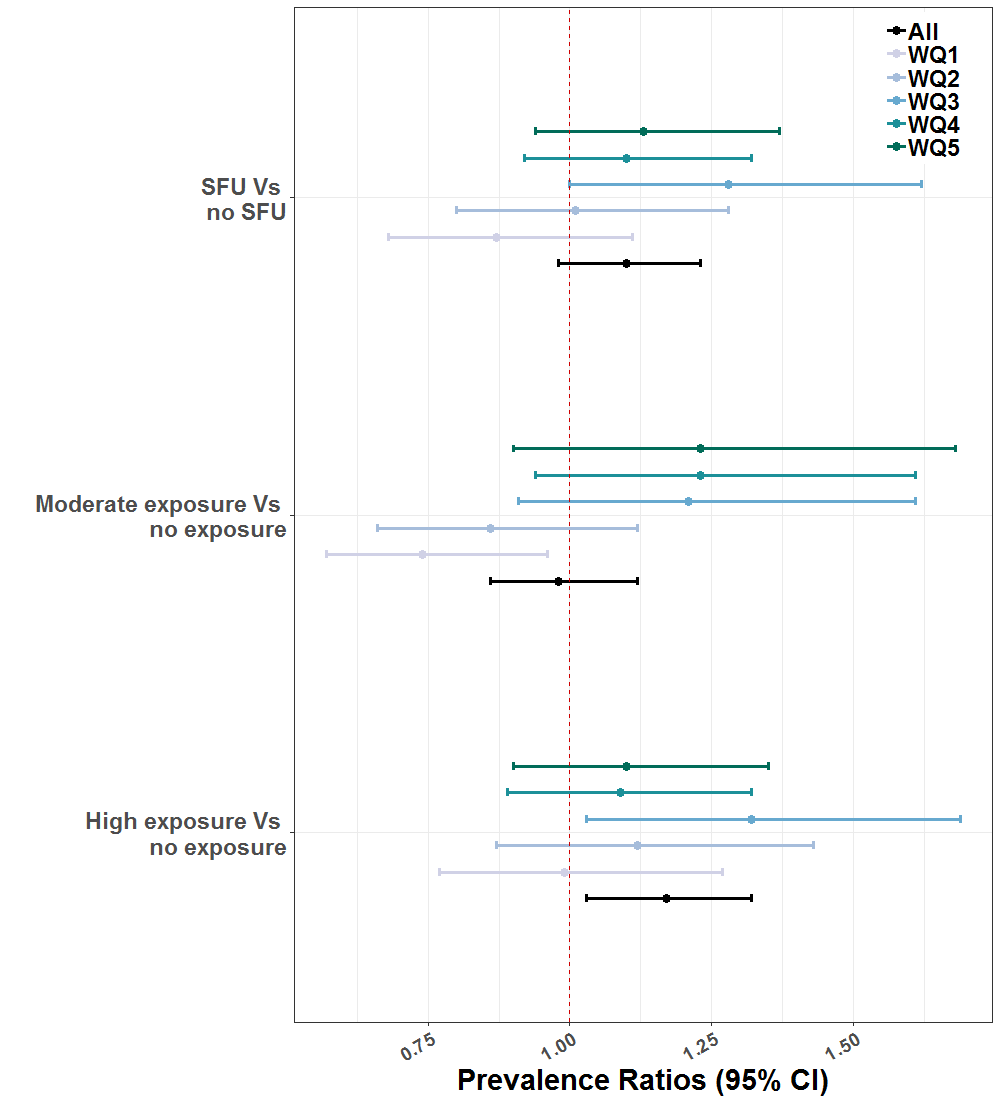Preprint
Article
Associations between Indoor Air Pollution and Acute Respiratory Infections among Under-Five Children in Afghanistan: Do SES and Sex Matter?
Altmetrics
Downloads
350
Views
311
Comments
0
A peer-reviewed article of this preprint also exists.
supplementary.pdf (290.80KB )
This version is not peer-reviewed
Submitted:
19 July 2019
Posted:
23 July 2019
You are already at the latest version
Alerts
Abstract
Background: Low-income families often depend on fuels such as wood, coal, and animal dung for cooking. Such solid fuels are highly polluting and are a primary source of indoor air pollutants (IAP). We examined the association between solid fuel use (SFU) and acute respiratory infection (ARI) among under-five children in Afghanistan and the extent to which this association varies by socioeconomic status (SES) and gender. Materials and Methods: This is a cross-sectional study based on de-identified data from Afghanistan’s first standard Demographic and Health Survey conducted in 2015. The sample consists of ever-married mothers with under-five children in the household (n=27,565). We used mixed-effect Poisson regression models with robust error variance accounting for clustering to examine the associations between SFU and ARI among under-five children after adjusting for potential confounders. We also investigated potential effect modification by SES and sex. Additional analyses were conducted using an augmented measure of the exposure to IAP accounting for both SFU and the location of cooking/kitchen (High Exposure, Moderate, and No Exposure). Results: Around 70% of households reported SFU, whereas the prevalence of ARI was 17.6%. The prevalence of ARI was higher in children living in households with SFU compared to children living in households with no SFU (adjusted prevalence ratio [aPR]= 1.10; 95%CI: 0.98, 1.23). We did not observe any effect modification by SES or child sex. When using the augmented measure of exposure incorporating the kitchen’s location, children highly exposed to IAP had a higher prevalence of ARI compared to unexposed children (aPR 1.17; 95% CI: 1.03, 1.32). SES modified this association with the strongest associations observed among children from the middle wealth quintile. Conclusion: The findings have significant policy implications and suggest that ARI risk in children may be reduced by ensuring clean cookstove as well as clean fuels and acting on the socio-environmental pathways.

Keywords:
Subject: Medicine and Pharmacology - Pulmonary and Respiratory Medicine
Copyright: This open access article is published under a Creative Commons CC BY 4.0 license, which permit the free download, distribution, and reuse, provided that the author and preprint are cited in any reuse.
MDPI Initiatives
Important Links
© 2024 MDPI (Basel, Switzerland) unless otherwise stated







